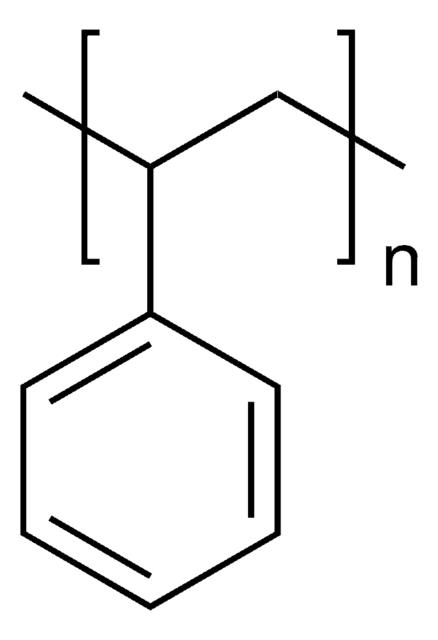430102
Polystyrene
average Mw ~192,000
Synonyme(s) :
PS
About This Item
Produits recommandés
Forme
beads or pellets
Niveau de qualité
Indice de fusion
6.0-9.0 g/10 min (200°C/5kg)
Poids mol.
average Mw ~192,000
Indice de réfraction
n20/D 1.59
Température de transition
softening point 107 °C (Vicat, ASTM D 1525)
Chaîne SMILES
c1(ccccc1)C=C
InChI
1S/C8H8/c1-2-8-6-4-3-5-7-8/h2-7H,1H2
Clé InChI
PPBRXRYQALVLMV-UHFFFAOYSA-N
Vous recherchez des produits similaires ? Visite Guide de comparaison des produits
Catégories apparentées
Description générale
Application
Forme physique
Code de la classe de stockage
11 - Combustible Solids
Classe de danger pour l'eau (WGK)
WGK 3
Point d'éclair (°F)
Not applicable
Point d'éclair (°C)
Not applicable
Équipement de protection individuelle
Eyeshields, Gloves, type N95 (US)
Faites votre choix parmi les versions les plus récentes :
Déjà en possession de ce produit ?
Retrouvez la documentation relative aux produits que vous avez récemment achetés dans la Bibliothèque de documents.
Les clients ont également consulté
Global Trade Item Number
| Référence | GTIN |
|---|---|
| 430102-1KG | 4061832107813 |
| 430102-3KG | 4061832107820 |
Notre équipe de scientifiques dispose d'une expérience dans tous les secteurs de la recherche, notamment en sciences de la vie, science des matériaux, synthèse chimique, chromatographie, analyse et dans de nombreux autres domaines..
Contacter notre Service technique




